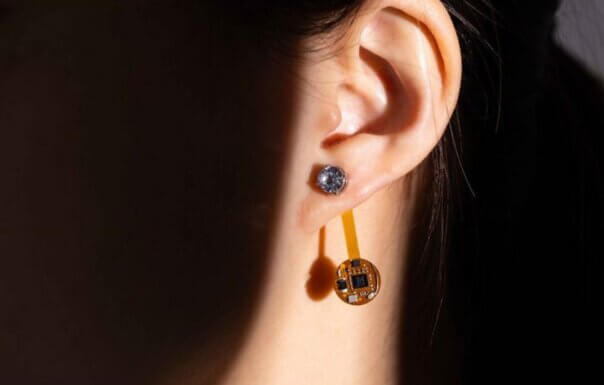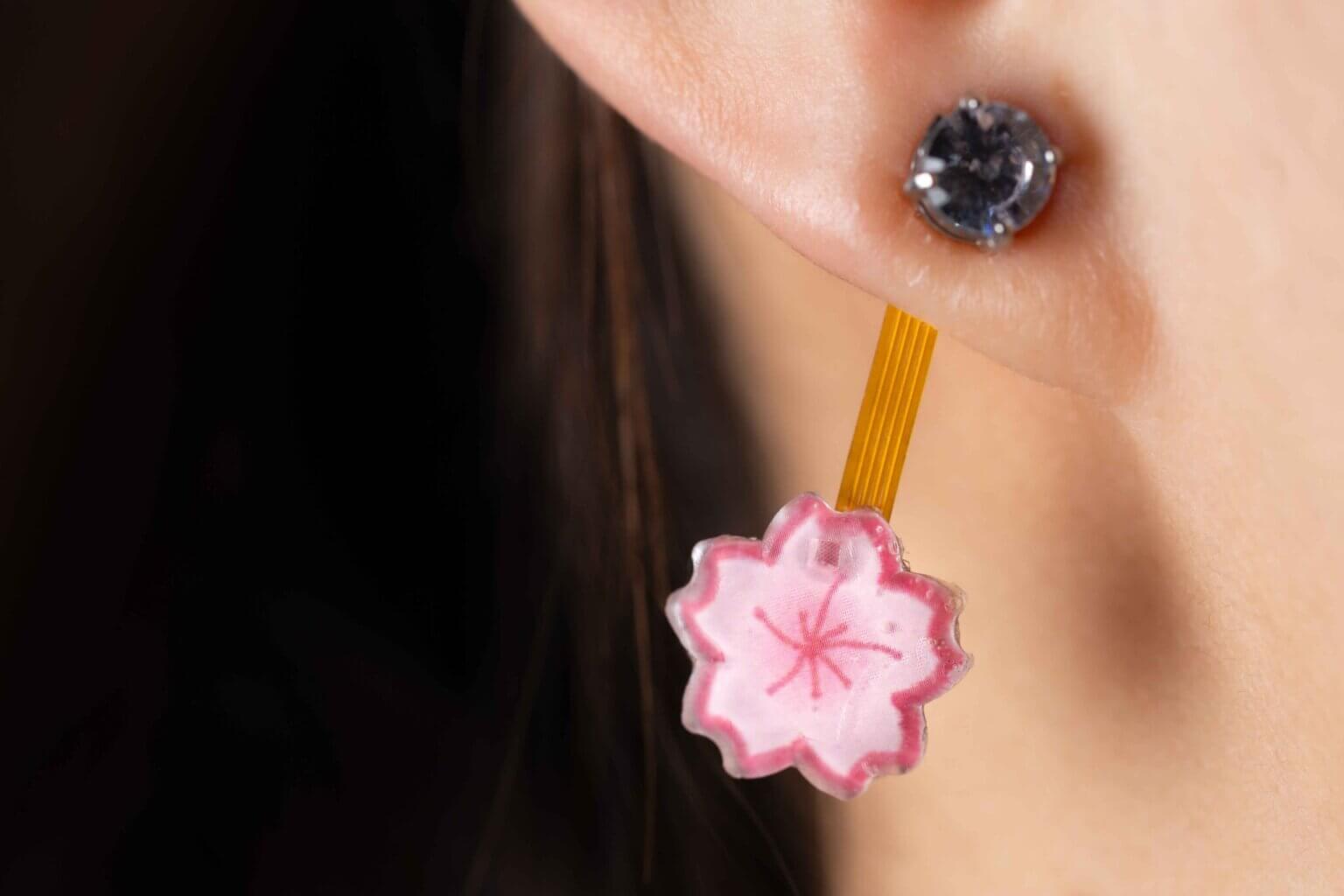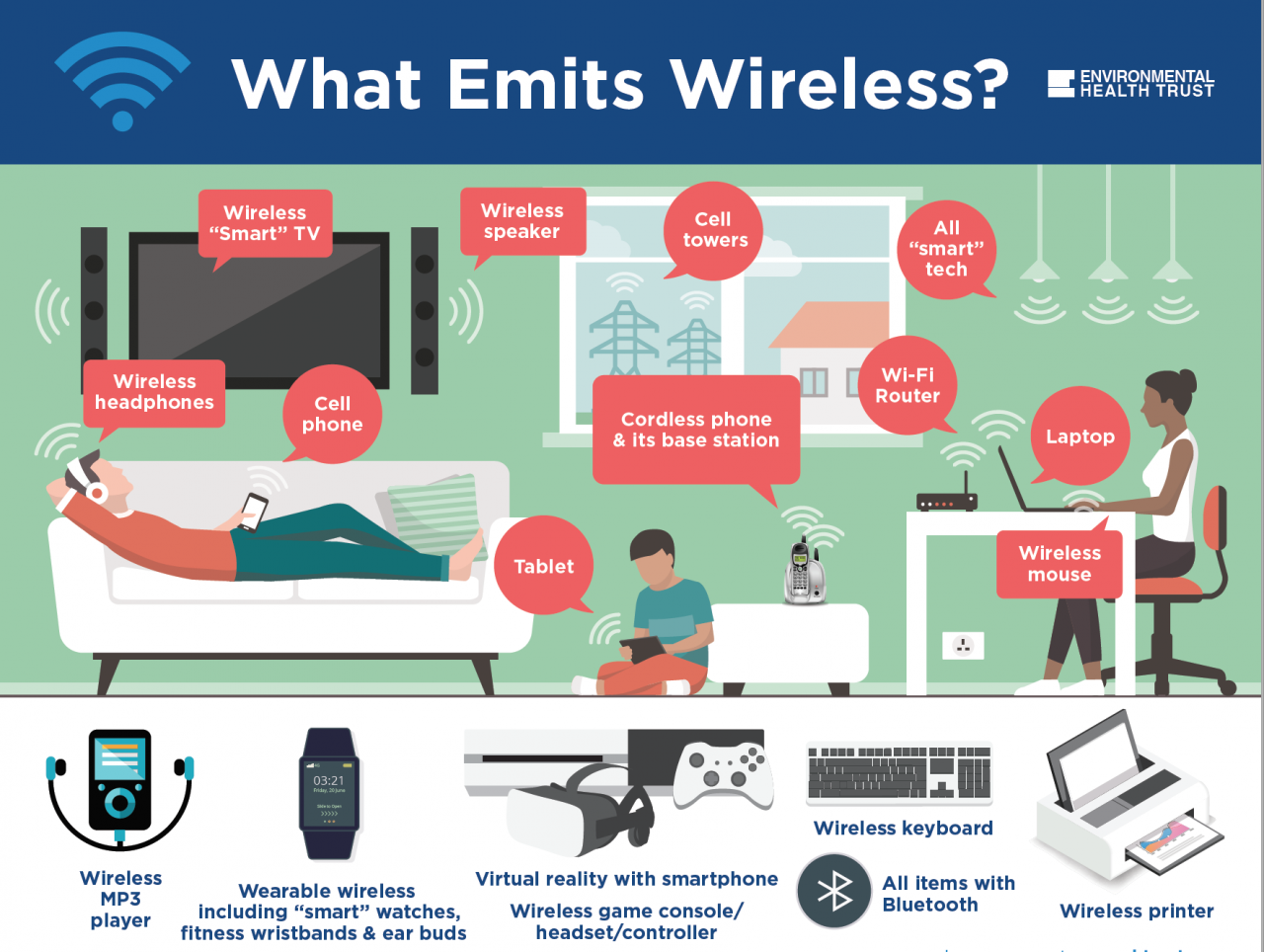 By B.N. Frank
By B.N. Frank
Decades of research have revealed that exposure to electromagnetic fields (EMF) from activity trackers and other wearables as well as other wireless sources – including Bluetooth and 5G – is biologically harmful. In fact, manufacturers are required to provide consumers with warnings about radiation emissions from all wireless devices! Nevertheless, in addition to earbuds, “smart” watches and rings, different kinds of wireless “smart” wearables continue to be created and promoted for a variety of purposes. In November, it was a “smart badge” that “comes equipped with a camera, text messaging, an AI-powered virtual assistant and – its most sci-fi-adjacent feature – a 720p-resolution interface that projects onto a user’s palm, called a Laser Ink Display.” More recently, it’s “smart” earrings.
From StudyFinds.org:
New smart earrings stylishly track body temperature better than a smartwatch

University of Washington researchers introduced the Thermal Earring, a wireless wearable that continuously monitors a user’s earlobe temperature. The smart earring prototype is about the size and weight of a small paperclip and has a 28-day battery life. The earring can be personalized with fashion designs made of resin or with a gemstone, without negatively affecting its accuracy. CREDIT: Raymond Smith/University of Washington
🔑 Key Findings:
- Smart earrings can track the wearer’s body temperature and the room temperature
- The wearable tech is wireless and contains a Bluetooth chip
- The earrings outperformed a normal smartwatch measuring skin temperature
SEATTLE — Smart rings, watches, and other accessories are becoming increasingly common, especially in the fitness world. Now, researchers from the University of Washington are introducing the Thermal Earring, a wireless wearable earring that monitors a user’s earlobe temperature.
The smart earring is comparable in size and weight to a small paperclip, yet has a battery life that lasts 28 days. The prototype works by having a magnetic clip attaching a temperature sensor to one’s ear, with another sensor dangling about an inch underneath to estimate room temperature.
Obviously, earrings are still fashion statements! With that in mind, these have been signed to allow personalization with designs made of resin or gemstones without impacting the quality. In a study of six users, the earring effectively outperformed a smartwatch at sensing skin temperature while at rest. It even showed potential by revealing signs of stress, eating, exercise, and ovulation.
Activist Post is Google-Free — We Need Your Support
Contribute Just $1 Per Month at Patreon or SubscribeStar
“I wear a smartwatch to track my personal health, but I’ve found that a lot of people think smartwatches are unfashionable or bulky and uncomfortable,” says co-lead author Qiuyue (Shirley) Xue, a UW doctoral student in the Paul G. Allen School of Computer Science & Engineering, in a media release. “I also like to wear earrings, so we started thinking about what unique things we can get from the earlobe. We found that sensing the skin temperature on the lobe, instead of a hand or wrist, was much more accurate. It also gave us the option to have part of the sensor dangle to separate ambient room temperature from skin temperature.”
Generating a wearable tech device small enough to be an earring yet technically strong enough only to need to be charged every few days was no easy engineering feat.
“It’s a tricky balance,” says co-lead author Yujia (Nancy) Liu, who was a UW masters student in the electrical and computer engineering department when doing the research and is now at the University of California San Diego. “Typically, if you want power to last longer, you should have a bigger battery. But then you sacrifice size. Making it wireless also demands more energy.”

The smart earring can be personalized with fashion designs made of resin — such as the flower shown here — or with a gemstone, without negatively affecting its accuracy. (Raymond Smith/University of Washington)
Given the size, the team had to make the earring’s power consumption as efficient as possible while also keeping room for a Bluetooth chip, battery, two temperature sensors, and an antenna. The Bluetooth chip allows the prototype to use less power than if it were paired with a device. Once the temperature is read and sent, it then shuts off and goes into sleep mode to save power.
Since the smart earring hasn’t been widely tested, the team investigated other possible applications to enhance future research efforts. In five patients with fevers, the average earlobe temperature rose 10.62 degrees Fahrenheit (5.92 degrees Celsius) compared with the temperatures of 20 healthy people. This shows that the earring could be used for continuously monitoring fevers.
“In medicine we often monitor fevers to assess response to therapy — to see, for instance, if an antibiotic is working on an infection,” says co-author Dr. Mastafa Springston, a clinical instructor at the Department of Emergency Medicine in the UW School of Medicine. “Longer term monitoring is a way to increase sensitivity of capturing fevers, since they can rise and fall throughout the day.”
In some small tests, the earring detected temperature variations related to eating, exercising, and stress. When tested on six users at rest, readings varied by an average of 0.58 F (0.32 C), which is in line with the 0.28 C to 0.56 C needed to assess ovulation and period tracking. A smartwatch shows variations outside of this range, up to 0.72 C.
“Current wearables like Apple Watch and Fitbit have temperature sensors, but they provide only an average temperature for the day, and their temperature readings from wrists and hands are too noisy to track ovulation,” says Xue. “So we wanted to explore unique applications for the earring, especially applications that might be attractive to women and anyone who cares about fashion.”
Although different tests and experiments found promising results with the Thermal Earring, the findings are still very new. More testing is necessary to validate the model for each use before being released to the public. Xue is working on incorporating heart rate and activity monitoring.
“Eventually, I want to develop a jewelry set for health monitoring,” says Xue. “The earrings would sense activity and health metrics such as temperature and heart rate, while a necklace might serve as an electrocardiogram monitor for more effective heart health data.”
You might also be interested in:
- Best Android Smartwatches For 2024: Top 5 Products Most Recommended By Experts
- Depression Stunner: Why Your Body Temperature Could Be Affecting Your Mood
- The top food for lowering blood pressure is…
Shyla Cadogan is a DMV-Based acute care Registered Dietitian. She holds specialized interests in integrative nutrition, metabolic dysfunction, and gastrointestinal disease.
The contents of this website do not constitute advice and are provided for informational purposes only. See our full disclaimer
Activist Post reports regularly about wireless wearables and other privacy invasive and unsafe technologies. For more information, visit our archives and the following websites:
- Environmental Health Trust
- Children’s Health Defense
- Electromagnetic Radiation Safety
- Physicians for Safe Technology
Become a Patron!
Or support us at SubscribeStar
Donate cryptocurrency HERE
Subscribe to Activist Post for truth, peace, and freedom news. Follow us on SoMee, Telegram, HIVE, Minds, MeWe, Twitter – X, Gab, and What Really Happened.
Provide, Protect and Profit from what’s coming! Get a free issue of Counter Markets today.

